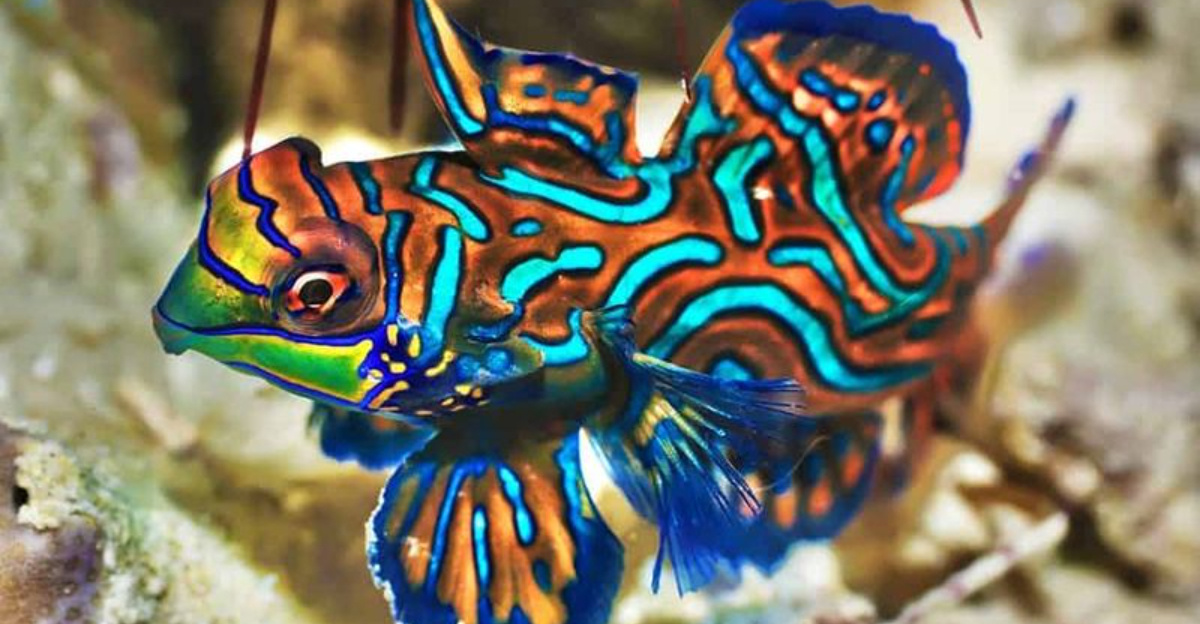Beneath the waves surrounding the United States lies a hidden world bursting with colors most people never get to witness.
From vibrant electric blues to fiery reds, these underwater residents put on a living color show that rivals the most stunning artist’s palette.
Dive in, and you’ll see: Mother Nature’s style beneath the waves is nothing short of jaw-dropping.
1. Garibaldi: California’s Orange Superstar
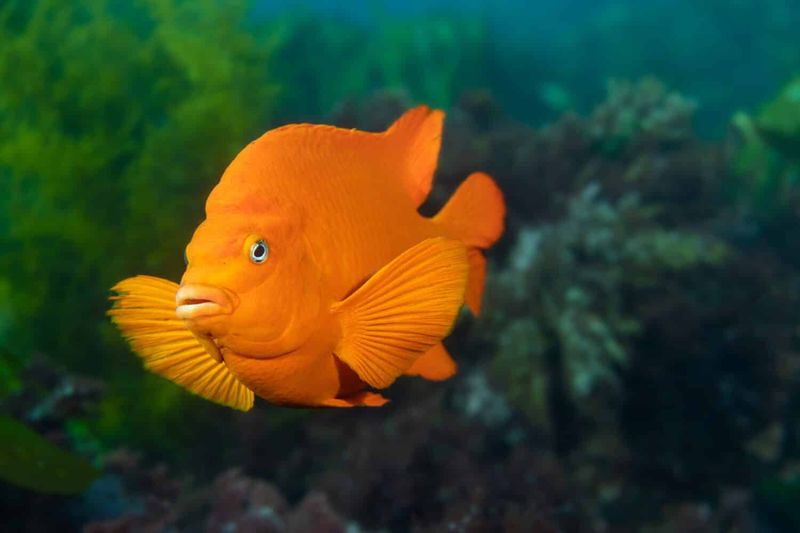
Think traffic cones, but with fins—that’s how bright these orange fish are! As California’s official state marine fish, Garibaldis strut through kelp forests with attitude to match their bold coloring.
I once spotted a male guarding his nest, charging at anything that came within ten feet – including my camera. These territorial punks grow to about 14 inches and can live up to 25 years, maintaining their brilliant hue throughout their lives.
Young Garibaldis show off electric blue spots that disappear as they mature, like underwater teenagers outgrowing their rebellious phase
2. Lionfish: Beautiful Invaders with Deadly Spines
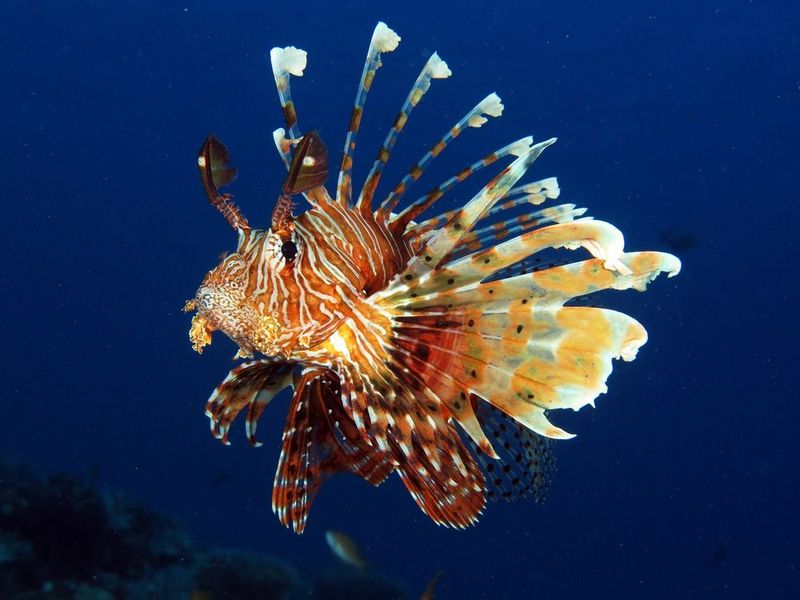
Don’t be fooled by their flowing, lion-like fins and striking stripes—these reef stunners are as dangerous as they are dazzling. Native to the Indo-Pacific, lionfish have invaded U.S. Atlantic waters with devastating effectiveness.
Their venomous spines pack a punch that feels like someone took a blowtorch to your hand. Trust me, I learned this the hard way during a dive off Florida’s coast.
Despite being unwelcome guests, you can’t help but marvel at their striking pattern and graceful movement as they hover motionless, waiting to ambush smaller fish.
3. Queen Triggerfish: The Royal Rainbow Ruler
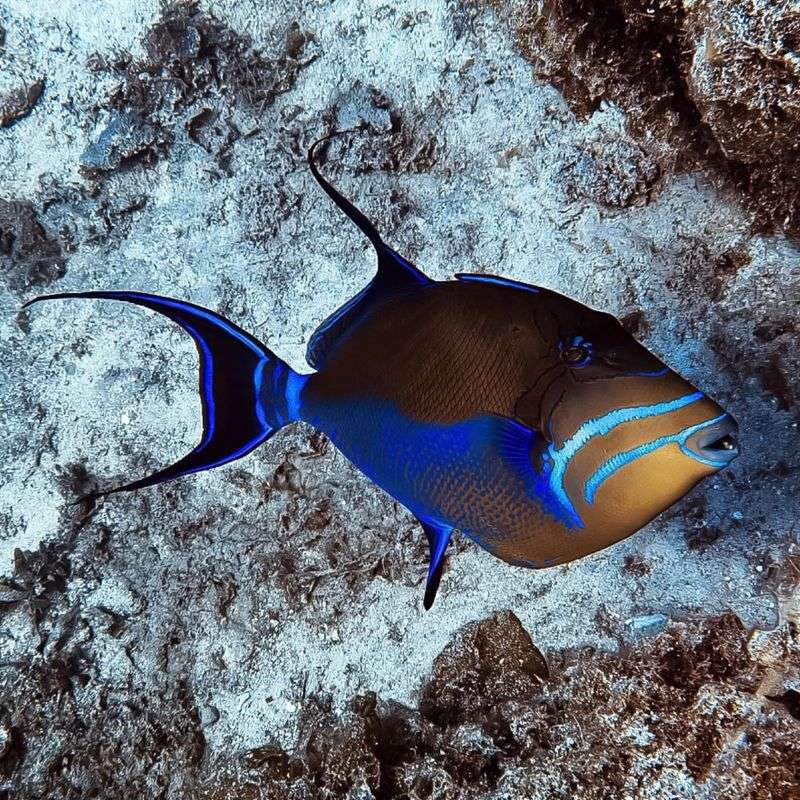
Displaying a palette that would make any artist jealous, the Queen Triggerfish blends blues, greens, and yellows with splashes of purple. Their distinctive oval shape and extended fins create an unmistakable silhouette against the Caribbean-blue waters.
These fish have personalities as colorful as their scales. These clever creatures use jets of water to flip over sea urchins and access their soft undersides—nature’s version of cracking a safe.
Found primarily in the Atlantic waters around Florida and the Caribbean, these royals can grow up to two feet long and command respect with both beauty and brains.
4. Mandarinfish: Living Watercolor Paintings
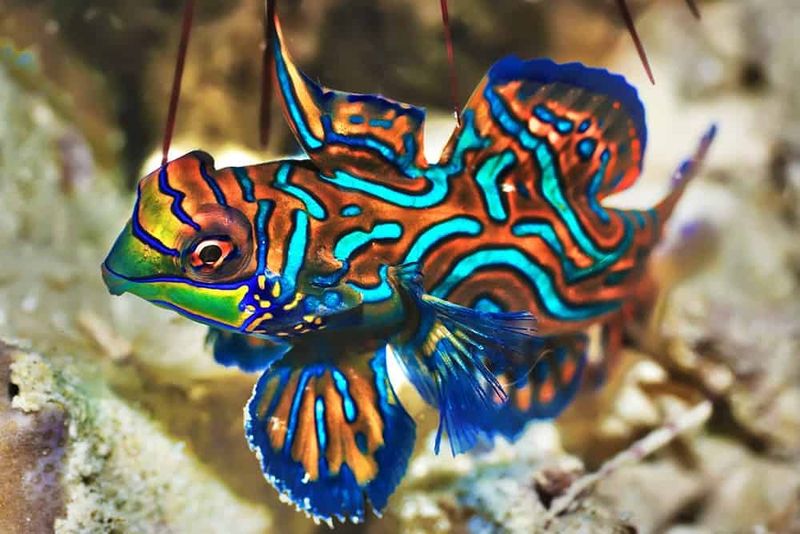
No photo editor needed – these fish really do wear psychedelic swirls of blue, orange, and green that seem to glow from within! Mandarinfish are tiny treasures, barely reaching 3 inches long, making their elaborate patterns even more impressive.
Unlike most fish, they lack scales, instead covered with a slimy coating that contains toxins to deter predators. Smart move for something that looks like swimming candy!
While primarily found in the Pacific, some specialty aquariums across the U.S. showcase these living jewels. Their twilight mating dance, where pairs rise up from the reef in perfect synchrony, remains one of the most magical underwater displays I’ve witnessed.
5. Candy Basslet: Tiny Fish with Neon Glow
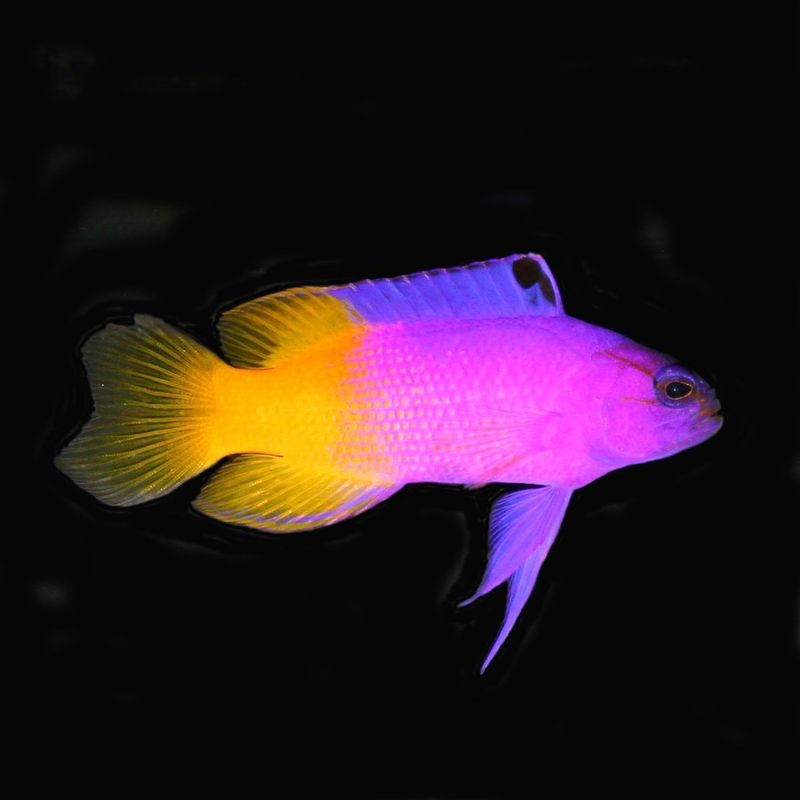
Imagine a fish that looks like it swam through a pink highlighter factory! Candy Basslets flash hot pink to red bodies with vibrant yellow tails – a color combo that would make any 80s fashion designer proud.
Despite measuring barely two inches, these micro-predators command premium prices in the aquarium trade. Their rarity and show-stopping colors can fetch upwards of $500 per fish!
Found naturally in deep reef crevices of the Caribbean, including U.S. territories like Puerto Rico, these little beauties prefer to hang upside-down under ledges. This quirky habitat preference makes spotting one in the wild a true underwater treasure hunt.
6. Mandarin Dragonet: Masters of Underwater Disguise
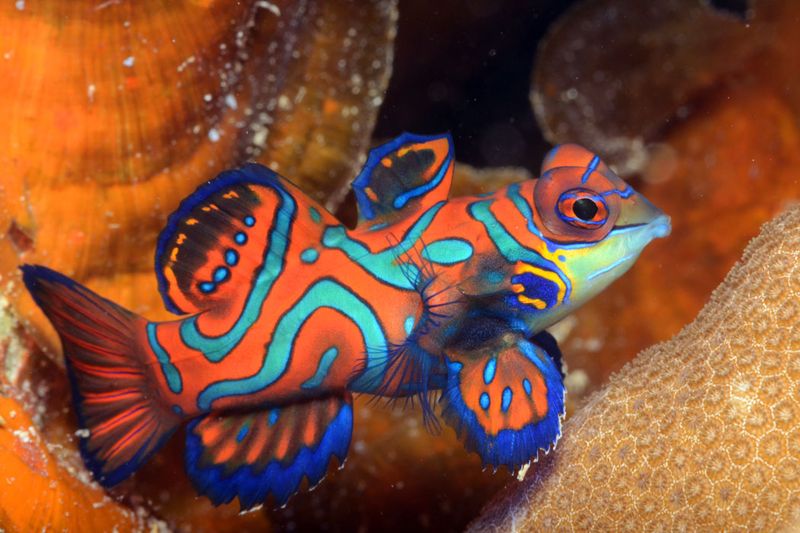
These bottom-dwelling fashionistas rock wavy patterns of electric blue, orange, and green that would make any designer jealous. The Mandarin Dragonet moves with the deliberate pace of someone who knows they look fabulous – no need to rush when you’re this gorgeous!
During a research dive in Hawaii, I watched one methodically picking through sand for tiny crustaceans, its finger-like pelvic fins acting like delicate hands. Their diet makes them challenging to keep in home aquariums, but specialized public displays across the U.S. showcase these living artworks.
Fun fact: their closest relatives are scorpionfish, though you’d never guess by looking at these peaceful, colorful characters.
7. Flamboyant Cuttlefish: Color-Changing Magicians
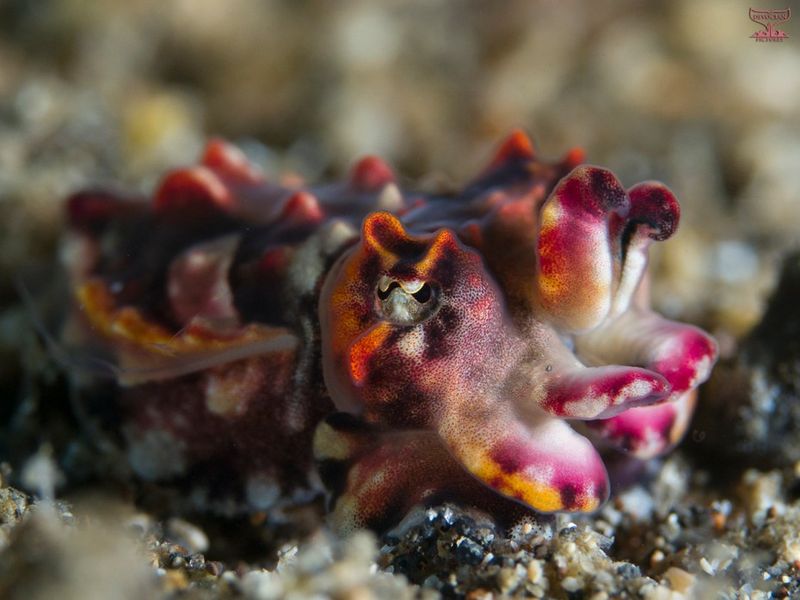
Picture a disco ball that could shapeshift—that’s the Flamboyant Cuttlefish for you! These masters of disguise flash hypnotic waves of electric purple, yellow, and red across their bodies while walking (yes, walking!) along the seafloor on modified arms.
Despite their small size – about 3 inches long – they pack deadly venom in their muscles, making them the only toxic cuttlefish species. A gorgeous display with a clear message—admire from a distance.
Found in specialized exhibits at major U.S. aquariums, these cephalopods demonstrate intelligence rivaling octopuses. Their mesmerizing color displays aren’t just for show – they’re complex communication signals that scientists are still working to decode.
8. Moorish Idol: The Fish That Inspired Nemo’s Gill
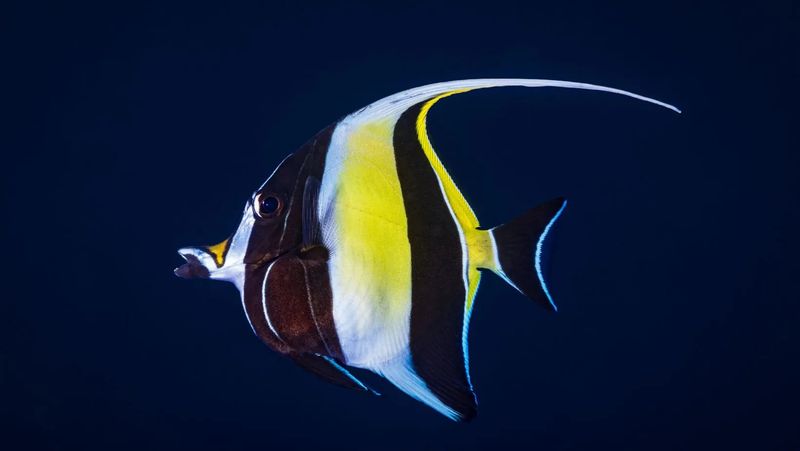
Black, white, and yellow bands wrap around these elegant swimmers, topped with a dramatic whip-like dorsal fin that can be three times their body length. You might recognize their distinctive shape from “Finding Nemo” – the character Gill was a Moorish Idol!
Hawaiian legends tell that these fish were guardians to the ocean goddess Na-maka-o-kaha’i, earning them their royal-sounding name. Their striking appearance has made them popular in aquariums, though they’re notoriously difficult to keep healthy in captivity.
I’ve watched schools of these beauties glide through Hawaiian waters, their ribbon-like fins trailing behind like underwater royalty on parade.
9. Southern Blue-Ringed Octopus: Deadly Beautiful Rings
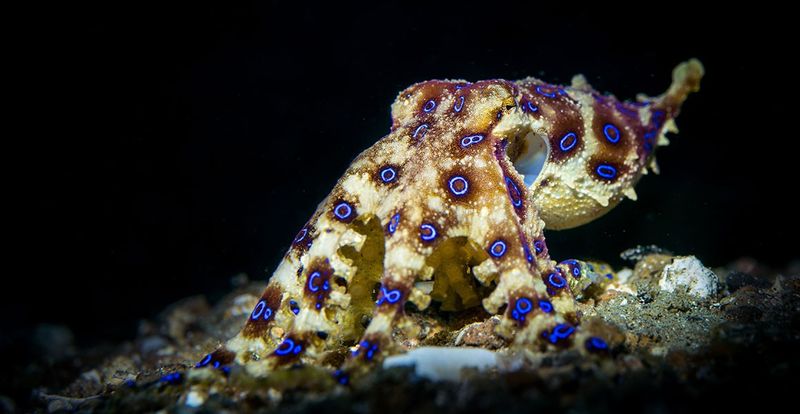
Normally a mottled yellowish-brown, these small octopuses transform into a warning sign when threatened. Electric blue rings light up across their body like neon signs screaming “DANGER!”
Don’t let their tiny size fool you – at just 5-8 inches, they pack venom potent enough to prove fatal to 26 adults within minutes. There’s no antivenom available, making these one of the deadliest marine creatures in U.S. waters.
Found primarily in tide pools and shallow reefs around Hawaii and other Pacific territories, these octopuses remind us that nature’s most vibrant colors often serve as warning labels. My heart nearly stopped when I spotted one while tidepooling – beautiful but terrifying!
10. Sea Sheep: Tiny Green Solar-Powered Slugs
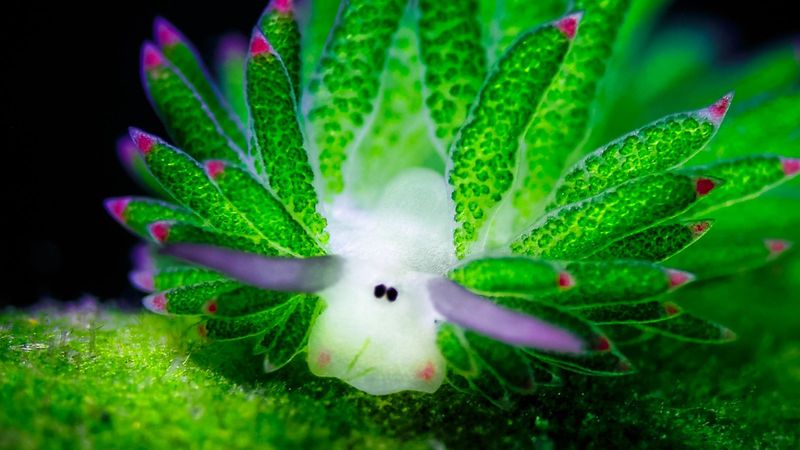
No, not actual sheep – these adorable sea slugs got their nickname from their leaf-like appendages that resemble a fluffy coat! Bright green with blue-tipped “leaves,” these inch-long creatures are living solar panels.
Their green color comes from chloroplasts stolen from the algae they eat. These borrowed plant cells continue photosynthesizing inside the slug, providing free energy – basically tiny underwater hybrid vehicles!
While primarily Indo-Pacific natives, specialized exhibits in major U.S. aquariums sometimes feature these photosynthetic wonders. I spent hours watching one navigate a blade of seagrass at the Monterey Bay Aquarium, mesmerized by this perfect blend of animal and plant.
11. Rainbow Parrotfish: Technicolor Reef Architects
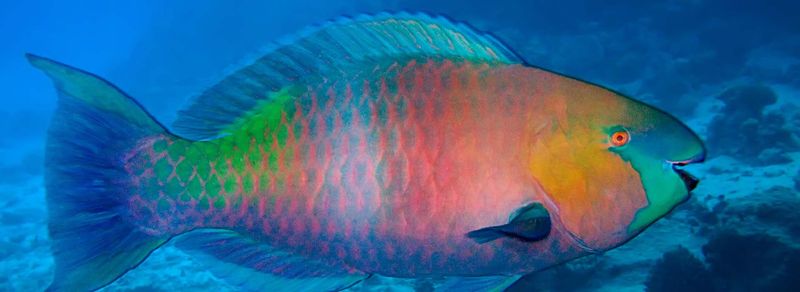
Swimming rainbows with beaks! These massive reef fish (up to 4 feet long) sport scales in every shade of the spectrum – from emerald greens to sapphire blues and sunset oranges.
Their parrot-like “beaks” aren’t just for show – they use them to scrape algae from coral, creating that white sand we love on tropical beaches. Seriously – they poop sand! One parrotfish can produce up to 700 pounds of sand annually.
Found in Florida’s coral reefs and throughout the Caribbean, these colorful characters undergo dramatic color changes throughout their lives. What starts as a drab juvenile transforms into a spectacular adult – nature’s version of an extreme makeover.
12. Pacific Sea Nettle: Amber Ghosts with Glowing Tentacles

Amber-colored bells trailing ribbon-like oral arms and 24 stinging tentacles that can stretch 20 feet – Pacific Sea Nettles look like something from another planet! These jellies create living light shows, with bioluminescent abilities that make them glow blue in darkness.
Unlike fish that actively swim, these jellies pulse rhythmically, creating a hypnotic dance as they drift through California’s coastal waters. Their sting packs a painful punch but isn’t dangerous to humans – just enough to make you respect their space.
During a night dive off Monterey Bay, I watched hundreds illuminate like underwater lanterns. The memory still gives me goosebumps!
13. Cannonball Jellyfish: Blue-Rimmed Living Lava Lamps
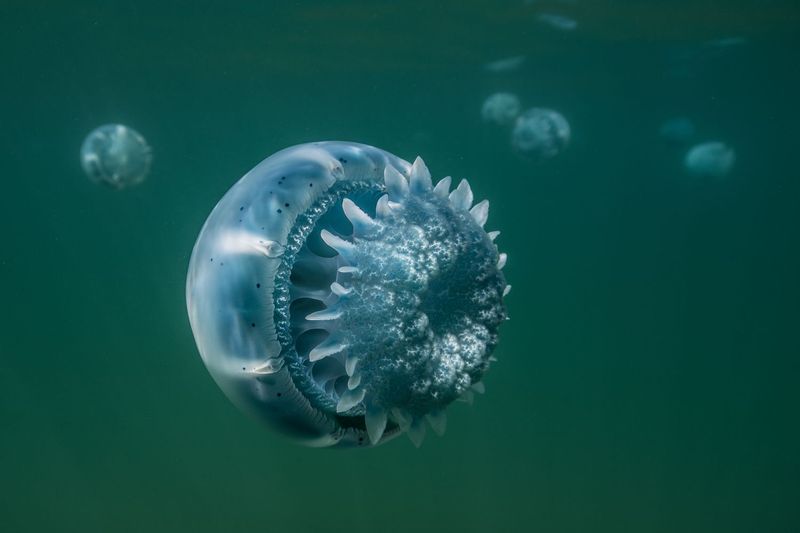
Resembling swimming mushroom caps, these jellies display a striking blue-purple band around the edges of their bell that looks like electric neon lighting. Their solid, firm bodies earned them their “cannonball” nickname – they’re the most solid jellies you’ll ever encounter!
Abundant along the southeastern U.S. coast, especially Georgia and Florida, these jellies form massive blooms containing millions of individuals. Despite their intimidating appearance, their sting is mild – more like a gentle tingle than the fire of their cousins.
Surprisingly, they’re considered delicacies in Asian cuisine and support commercial fisheries in the Gulf of Mexico. Who knew these living lava lamps were actually on someone’s dinner menu?
14. Ocean Sunfish: Silver Giants with Rainbow Parasites
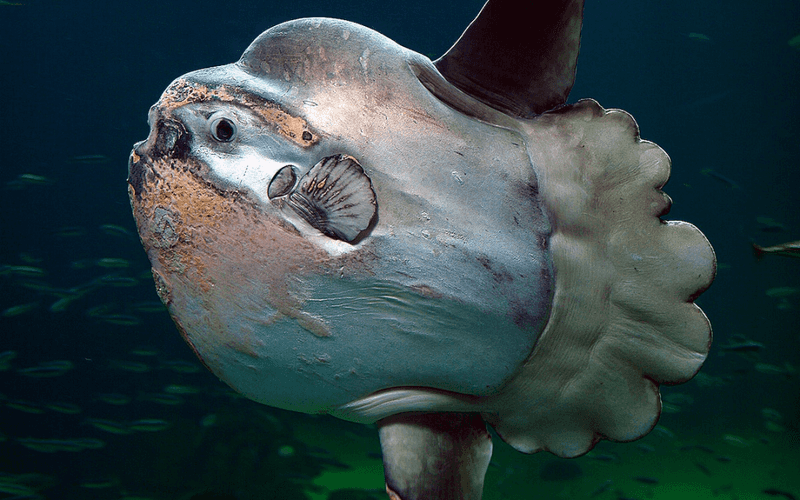
Picture a swimming head without a body – that’s basically a sunfish! These bizarre giants can reach 10 feet and over 2,000 pounds, with skin that shifts between silvery-gray and brown with iridescent patches.
The colorful part? They’re often covered in parasites of every hue imaginable. Sunfish host up to 40 different parasite species that create a living rainbow across their skin – nature’s version of unwanted tattoos!
Found off both U.S. coasts, these gentle giants often bask at the surface, warming their massive bodies after deep dives. I nearly capsized my kayak when one suddenly surfaced beside me off California’s coast – their size is truly mind-boggling!
15. Velella velella: Sapphire Sailors of the Surface
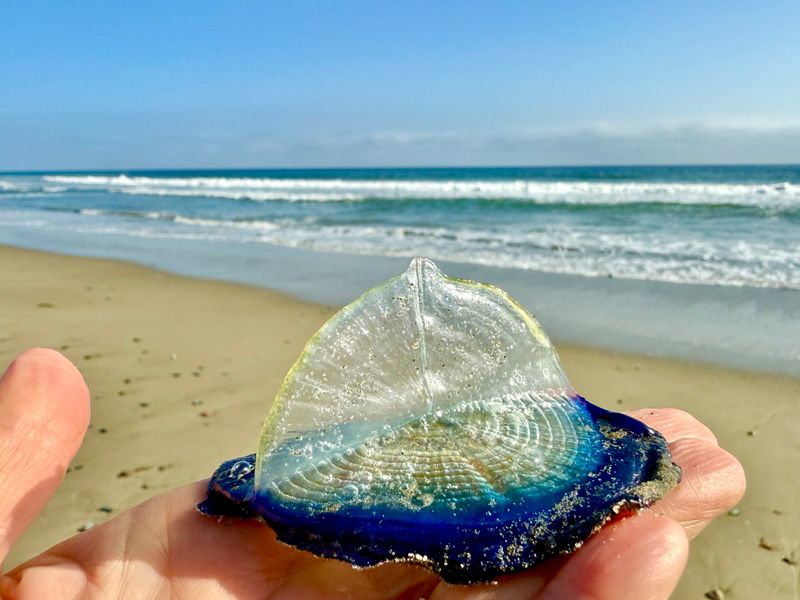
With vibrant blue bodies and delicate, see-through sails, these colonial hydrozoans glide along the sea surface like tiny nautical travelers. After storms, beaches along the West Coast can turn blue when thousands wash ashore.
Though they resemble jellyfish, they’re actually colonies of specialized individuals working together – nature’s version of a sailing crew! Their intense cobalt color comes from their diet of fish eggs and plankton.
I once found a beach in Oregon completely carpeted with these creatures after a storm. The sand looked like it was covered in blue glass chips catching the sunlight – one of the most alien and beautiful sights I’ve ever witnessed.
